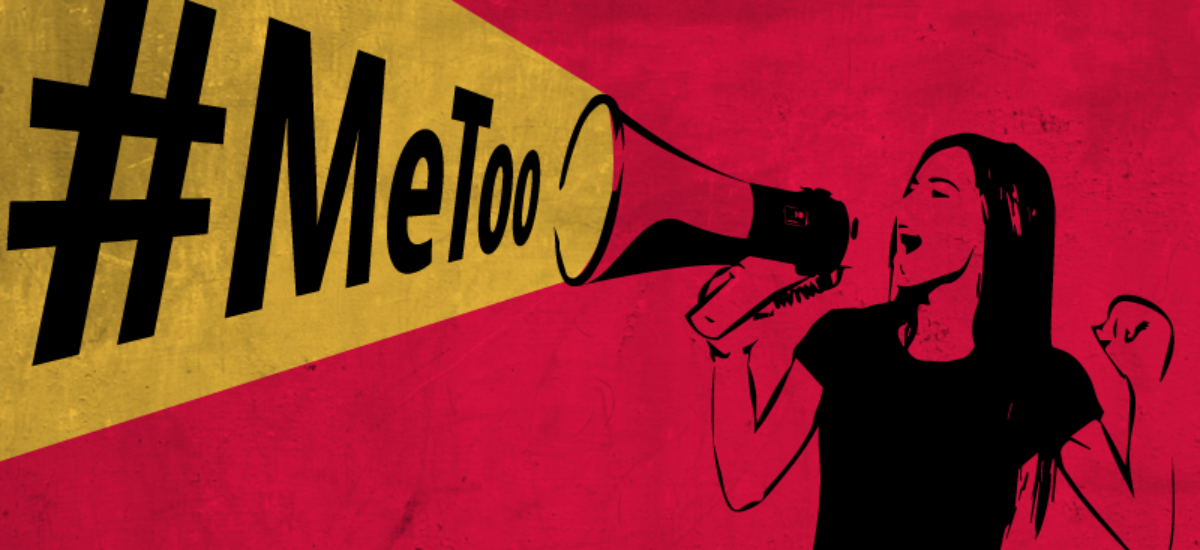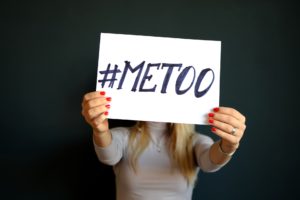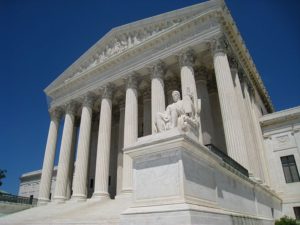Brett Kavanaugh in the Time of Me Too
 Credits: Flickr
Credits: Flickr
As the swing vote on the Supreme Court, Justice Anthony Kennedy could not be pinned ideologically one way or the other. In practice, however, he sided with the Liberal justices on a number of key issues, including same-sex marriage and abortion rights. With his retirement came an opportunity for the Republicans to tip the ideological scale of the Supreme Court in a starkly more conservative direction. Upon Donald Trump’s nomination of Brett Kavanaugh, it was clear that Republicans intended to take that opportunity, leading to severe backlash from Democrats and Liberals alike.
The opening of a critical seat on the bench, Kavanaugh’s partisan leanings, and the implications of that combination on the future of the Supreme Court laid the foundation for a highly charged battle. The opposition to Kavanaugh’s nomination was further exacerbated by his views on abortion and presidential power. Regarding the latter, a 2009 article in the Minnesota Law Review revealed that he believed the President should be exempt from criminal prosecution whilst in office. This meant that Donald Trump had nominated a justice that, if confirmed, could potentially come to obstruct the investigation into his own administration’s ties with Russia.

In addition to the reaction to Kavanaugh’s controversial views, there was also concern over the unwillingness of the Trump administration to disclose over 100,000 pages of documents regarding Kavanaugh’s time spent in the White House Counsel’s office during the Bush administration. Democrats demanded to see the documents detailing Kavanaugh’s time as staff secretary before the confirmation hearings took place, but the Administration argued that it was irrelevant to proceedings, leading many to raise alarm over a potential cover up. To make matters worse, 42,000 of those documents were rejected immediately preceding the hearings.
This controversy is spectacular in its contention, and the debate it has inspired, but it is by no means unprecedented. Rather, it is representative of a larger trend of political polarization that has been occurring in the United States for some time now. In 2014, Pew Research Center found that “Republicans and Democrats are more divided along ideological lines – and partisan antipathy is deeper and more extensive – than at any point in the last two decades.” Just a few years later, this truth has only become more severe, with Pew reporting in 2017: “The divisions between Republicans and Democrats on fundamental political values – on government, race, immigration, national security, environmental protection and other areas – reached record levels during Barack Obama’s presidency. In Donald Trump’s first year as president, these gaps have grown even larger.” This divide has resulted in painful gridlock in the US political system, preventing action on a variety of issues, including the federal budget, healthcare, and now Supreme Court nominations.
The significance of the controversy, however, extends beyond the contentious politics that have comprised it. The intersection between the Kavanaugh nomination and the Me Too movement have brought have dangerous implications for both the institution of Supreme Court nomination and the Me Too movement itself.

The Me Too movement is by no means a new phenomenon. The phrase “Me Too” was first coined by Tarana Burke in 2006 as a way to destigmatize sexual violence and raise awareness of its devestating ubiquity. It went viral in 2017 when Actress Ashley Judd accused former film producer Harvey Weinstein of sexual harassment, leading to a wave of sexual abuse allegations against Weinstein. This inspired a myriad of allegations against high-status individuals not just in the film and television industry, but in sports, music, business, and politics as well. So far, this movement has brought down many prominent individuals, such as Kevin Spacey, James Levine, Larry Nassar, and Bill Cosby, showing just how influential it had become. It has transcended mere rhetoric and developed into a highly consequential force.
On September 16th of this year, this movement and the Supreme Court nomination process were brought together when professor Christine Blasey Ford accused Kavanaugh of sexual assault whilst they were in high school. Ford claims that Kavanaugh held her down and tried to force himself on her at a party, but that she was able to escape. She stated that she has struggled with this incident for years, and was very hesitant to go public, knowing the kind of attention it would bring. However, once Kavanaugh’s Supreme Court aspirations became public, she felt an obligation to come forward. There has been a great deal of scrutiny and debate regarding the validity of her claim. Whatever the outcome of this charge is, it will have powerful implications for both the movement and the nomination process.
If the claim is true, it could be reason to deny Kavanaugh’s nomination, as it’s likely that it would move Republicans currently in favour of Kavanaugh to vote against him. In that case, it would show the potential of external factors to dictate the ideological balance of the United States judiciary now and in the future. Beyond working its way into entertainment and politics, the movement will have become a factor in a political institution with multigenerational effects, breaking not only lateral industrial boundaries but temporal ones as well. It’s also highly reflective of the level of scrutiny that has come to accompany the Supreme Court nomination process, and the development of this process as a proxy battlefield for political ideology. This is not to say that such action would be unjustified given the claims against Kavanaugh, but is simply to acknowledge that this is indeed the reality that exists.
If the the claim is false, it could serve to destructively undermine the Me Too movement. Critics of the movement claim has created a powerful rhetorical tool with the potential to be wielded destructively, allowing individuals to make false accusations of sexual assault against others. If Ford’s claim is indeed shown to be false, this would confirm that criticism in the eyes of the movement’s opposition, dealing a blow to the progress that the movement has made as well as its future capability. It could also serve to reverse the movement’s past gains in influence. In regard to the Supreme Court nomination process, a false claim would also show the extent to which actors are willing to go to block the nomination process, by means of weaponising a social movement in their own self-interest.
Either way, this comparison is reflective of the paralysing polarisation of the Supreme Court nomination process. In theory, the nomination process for a Supreme Court justice is insulated in that it remains impermeable to political bias and is based solely on competency and qualification. In practice this has not been the case.

The Supreme Court is indeed an ideological body, the balance of which dictates social policy in the United States. Likewise, the nomination process has become an ideological battle fought by both sides to try to tip the balance in their favour, leading to the social outcomes they prefer. It has become highly permeable to external influence. Again, this reality is not new, and neither is the realisation that it exists. What is new is that this permeability has now led to paralytic disfunction. Before, albeit dealing with considerable friction and facing considerable delays, the process continued to function; justices were confirmed and the Supreme Court continued to be able to act. Now, the controversy over Kavanaugh’s nomination has revealed that the confirmation of a Supreme Court justice has become almost unacheivable.
Kavanaugh’s confirmation would have shown that the nomination process is still viable. Ford’s accusation, spurred by the Me Too movement, and utilisation of that accusation by political opposition confirms that the process is broken. Rather than working to cooperate to fill a position, opposing parties do everything in their power to prevent the other from gaining influence. Furthermore, even if a candidate were able to be confirmed, the amount of conflict involved in process would undermine that individual’s decisions for the entirety of his or her career. An immobilising cycle of obstruction has been set into motion that threatens to prevent confirmation of any Supreme Court candidate now or in the future. Without that ability, the Supreme Court cannot function.
Edited by Isabel Post
